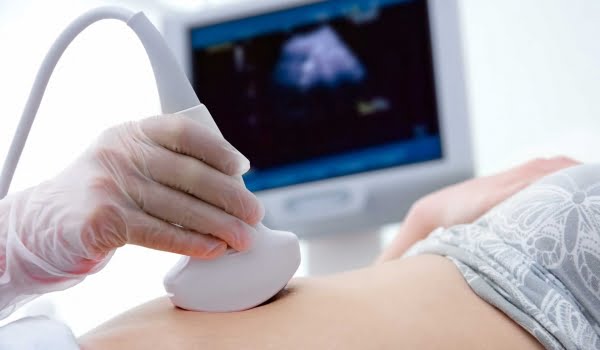In clinical terms, an ultrasound test is known as an ultrasonography test (USG). These tests are used to diagnose various ailments in the abdominal or pelvic region. A USG test uses sonography technology to obtain live images of organs inside the body, and these tests can greatly assist doctors in the USG Centre in Dehradun in diagnosing serious ailments. USG tests, such as abdominal ultrasounds, are most commonly used to confirm pregnancies during the second trimester.
To better understand this technology, consider it analogous to radar or sonar used in the military. However, unlike a few other clinical and scientific live imaging technologies, USG does not employ any form of radiation. As a result, an abdominal ultrasound test for pregnant women is considered completely safe.

An abdominal ultrasound test is a USG procedure that is performed on the abdomen at Semwal Diagnostics, USG Centre in Dehradun. Doctors can see live images of organs and other structures inside the abdominal region of the body using abdominal USG tests.
While it is most commonly used to diagnose pregnancy, doctors also use it to diagnose internal physical ailments such as an abdominal aortic aneurysm. Thus, an abdominal ultrasound test, also known as an abdominal USG, is used to diagnose mild to severe ailments that may affect the internal organs housed in the abdominal region, allowing effective treatment to begin as soon as possible.
To understand how an abdominal USG is performed, you must first understand how a USG machine works. A USG machine is designed to generate ultrasonic sound waves that penetrate the abdomen. These sound waves reflect off the internal organs and other structures in the abdominal region, such as bones, muscles, and tissues. A USG machine’s handheld transducer then receives the reflected sound waves and displays live images of the internal structures on a screen.
The entire procedure for an abdominal USG at the USG centre in Dehradun is now performed with some preparation on the part of both the patient and the doctor at Semwal Diagnostics. Let’s go over the entire procedure of an abdominal USG to get a better understanding of what to expect before, during, and after this procedure.
Prior to the procedure, you must fast for at least 8 to 12 hours before having an abdominal USG. You should also make an effort to empty your bowels and bladder. This is due to the fact that urine in the bladder and fecal matter can frequently cloud the visuals captured by a USG. When you arrive at the USG centre in Dehradun in Semwal Diagnostics for an abdominal USG, you may be asked to change into a hospital gown rather than your regular clothes. Furthermore, you should check with your doctor ahead of time to see if you should continue taking any medications you are currently taking.
You probably didn’t realize that your abdominal USG would be performed by a sonographer rather than a doctor. This is due to the fact that sonographers are specially trained to perform ultrasound tests on various parts of the body. When it comes to USG tests, they are the go-to people. The sonographer will first apply a special gel to your abdomen, which will aid the handheld transducer in capturing higher-quality images.
To aid in the development of clear images, it is common practice to shave any thick body hair in the abdominal region. For the most part, an abdominal ultrasound test is completely painless. However, if you have any type of pain or soreness in the abdominal region, the sonographer may apply pressure to the area to obtain a clearer image.
An abdominal ultrasound test requires no recovery time because it is a completely non-invasive and painless procedure. However, you may need to rinse your abdomen several times to remove the gel used during the USG test. An abdominal USG can take anywhere from 30 to 40 minutes to complete. Typically, you can expect to receive the results within 24 hours.
Abdominal ultrasound tests are completely safe for people of all ages because they do not use any of the radiation that is commonly associated with other tests such as CT scans and X-rays. However, there have been extremely rare cases of ultrasound tests temporarily heating the tissues in the abdomen. In the long run, there have been no reported negative effects. As a result, with the assistance of this comprehensive walkthrough of what to expect in an abdominal ultrasound test, you can be better prepared to undergo such a procedure, if necessary.
